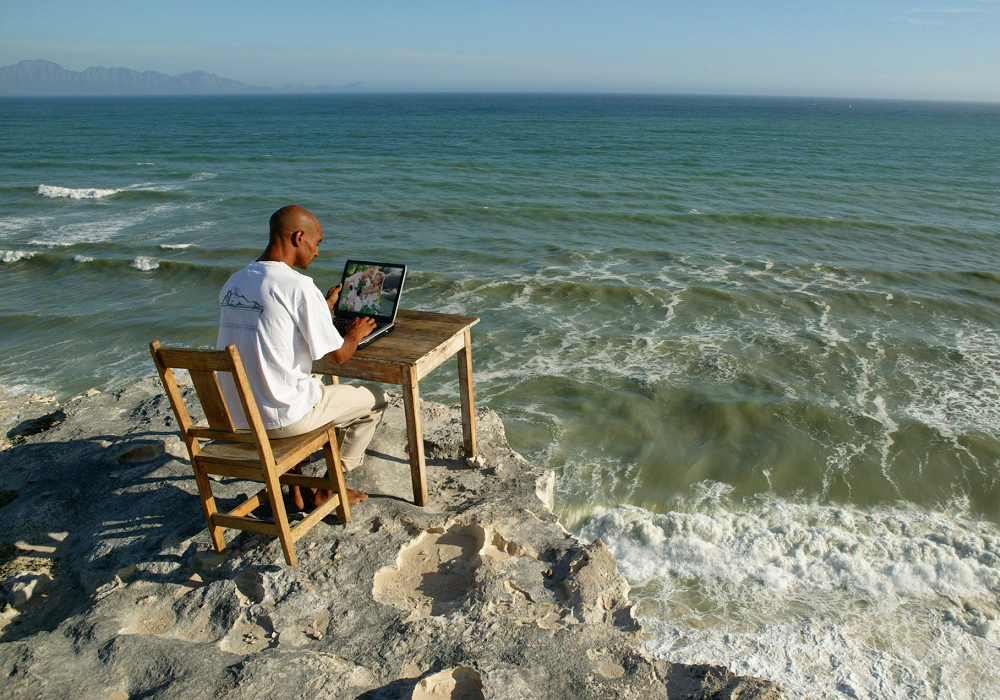Making Working Remotely Successful
There seems to be an underlying assumption that a remote friendly company is a remote only company — that employees can only be all remote or all in the office.
This is a false dichotomy, though. Being remote friendly does not necessarily mean that being remote is required. There’s nothing wrong with giving your employees an office they can choose to use. In fact, this is the most feasible option for companies that already have offices, and can be quite a large cost savings to rapidly-growing companies, since they don’t have to house all of their employees in their office at any given time. New companies can offer reimbursement on co-working spaces and encourage and allow for geographically close coworkers to find a shared office space if they want to.
Not everyone is cut out for working remotely, and that’s fine. Companies don’t have to choose between all their employees being remote and all their employees being in the office. In fact, the point of being remote friendly is that location doesn’t matter. When location doesn’t matter, it can still be in an office (and it — gasp! — doesn’t matter!). Just like it doesn’t have to be all office, it doesn’t have to not be, either. What’s important is that the decision is left to the individual employees.
For some reason, the idea of working remotely seems to conjure images of being locked in a home office in your basement or attic with little natural light and no sense of time. Of work and home life blurring together as you find yourself working until midnight. Of not having any human interaction at all for months at a time. Sounds a lot like the “coder” stereotype, too.
When talking about remote working and remote-friendly environments, the fact that working beyond the typical 40 hours is itself isolating seems to be ignored. I think this is in part due to the farce that spending time in proximity to your coworkers counts as “socializing.” It doesn’t. Being around people and being with people are two different things. People need socialization outside and away from their coworkers. Seriously, no one needs to spend that much time together. Hell, I don’t even spend as many (waking) hours around my own husband as I have around coworkers in an office environment.
I, personally, actually tend to be more social when I work for a remote-friendly company than when I work for an office-only company. Remote-friendly companies are more results-oriented and therefore, more flexible on hours and breaks (not always, and not completely, but usually, and mostly), which makes grabbing a nutritious lunch with a friend much easier and less stressful.

To put it crudely, if you’re working remotely and haven’t had human contact in months, then you’re doing it wrong. If you feel isolated and in need of social contact, your work does not have to provide that. Find an interest group or take up a hobby that naturally puts you around people. Or, if just being around people is enough, work a day or two at your local coffee shop. Working remotely is only as isolating as you make it.
As far as I can tell, this is one of the underlying ideas for all the times I see people cite “can’t collaborate” as a reason remote working is somehow inferior to working together in an office. What little information I can get from the people who hold this view amounts to “I can’t walk up to a person, tap them on the shoulder, and talk to them about something,” which I’ve already addressed. They also seem to think that no one talks to one another. At entrepreneur.com they tend to agree with me here.
However, the opposite is actually the case in a functioning remote environment. Chat applications, such as HipChat or Slack, provide the infrastructure for everyone to communicate with everyone else. Most remote friendly companies have a main channel that everyone is required to be in. In that channel, you check in and check out, whenever you go away for any length of time, and when you come back from being away. Shared calendar applications, such as Google Calendar or Exchange Calendar, are also required to keep track of times when people plan to be away or otherwise unavailable for any reason. Add to that tools like GoToMeeting, join.me, and Screenhero, among others, and there’s not much left that you can do in an office that you can’t in a remote environment.
Yes, if you really want, that includes virtually tapping someone on the shoulder. It’s called a direct, instant message with whatever messenger system your organization uses.
Resources
The Benefits of Cupping Therapy
Repairing Your Online Reputation With Social Media
Urban Artwork Digital Downloads

Remote work can work just fine, but the company has to be fully on board. If management is reluctant, then they’ll look for problems, even where there aren’t any.
Having worked remotely for over 2 years, I can’t see ever going back to being in an office environment 40+ hours per week. Some people (like me) just don’t have the personality for it. I’m much happier working out of the house, and I know because of that I’m more productive than when I’m in a cubicle for 8 hours a day.
I’ve found that the success of remote work situations is very dependent on the type and size of the business involved. Some business models simply require too much personal, daily interaction between employees to make remote work feasible.